Does buying a used Hellcat mean signing up for certain pocketbook doom, or can you trust these supercharged monsters for daily use?
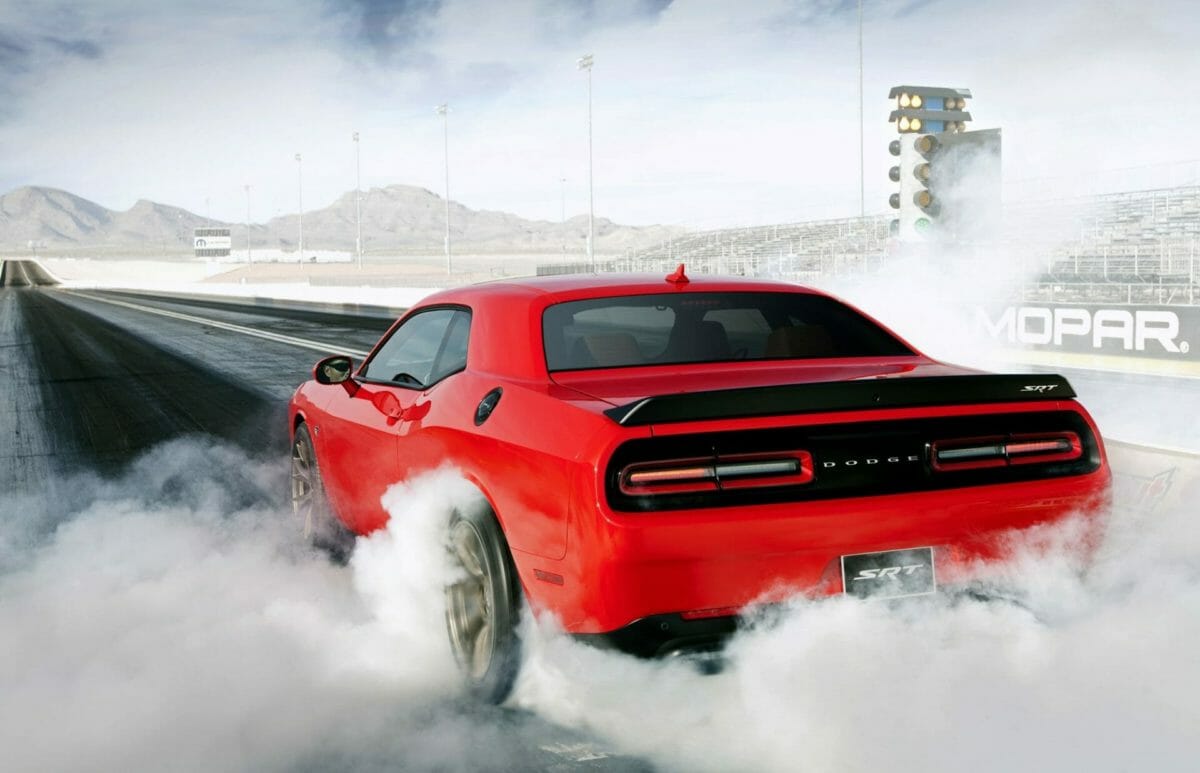
There’s certainly no question about whether or not the Dodge Hellcat Supercharged V8 is a work of pure insanity. Yet, in a world of smaller displacement engines, turning to turbochargers for efficiency and a pending electric vehicle revolution, Dodge maintained their growling V8 heritage.
Since the original debut of the Hellcat in the 2015 Dodge Charger and 2015 Dodge Challenger, Dodge has proceeded to install the engine in over half a dozen models throughout the Fiat-Chrysler family of vehicles. This includes Dodge, Jeep, and Ram vehicles.
If a used Hellcat vehicle is on your radar, there are some things to consider. One major thing to think about is that most people who buy these cars don’t buy them to get groceries. When buying a used performance car, it is diligent in assuming that it has been driven fairly hard.
Of course, when engineers are developing performance cars, they operate under the assumption that they will be driven hard, too. It leaves us all in a situation where we are unsure if buying a used performance car is prudent. This is especially true in the case of a vehicle being out of warranty.
With earlier model Hellcats now falling out of the five-year/60,000-mile warranty, we’re left to wonder if a used Hellcat is going to cost you the savings you get from buying used eventually.
Let’s take a look at the specs of the Dodge Hellcat engine, what vehicles you can currently find them in, and whether or not they are a trustworthy option for a daily driver. After all, nobody wants to take their new-to-them car straight into the shop for costly repairs.
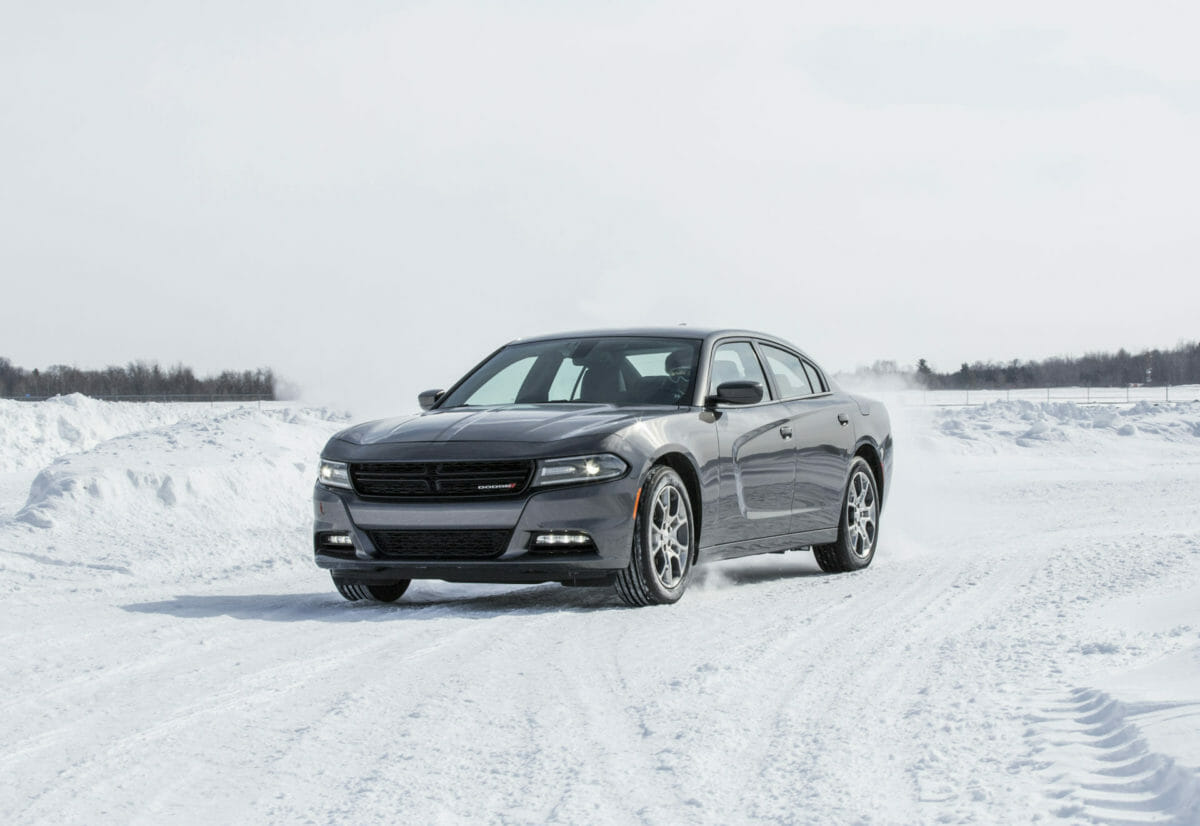
Hellcat Engine Specs
Right off the bat, many people know the important figures about the Hellcat engine. Reasonably so, as Dodge very prominently touts the 707 horsepower output.
However, the horsepower figure has changed throughout the years depending on what model you find it in.
Though, the engine structure and composition remain the same throughout all models.
The Hellcat V8 engine has a cast-iron engine block and aluminum cylinder heads. While a cast-iron block is outdated in the eyes of some due to its weight when compared to aluminum, its ability to withstand more power and abuse makes it a great choice for high output V8s.
Additionally, the Hellcat V8 has a forged steel crankshaft and forged steel connecting rods. Atop the rods sit forged steel pistons with a “diamond-like” coating on the wrist pins. Ultimately, this engine is built to withstand power and abuse.
The engine has 6.2-liters of displacement with a bore of 104 millimeters and a stroke of 91 millimeters. It has a remarkably high compression ratio for a factory forced induction engine at 9.5:1. It has 707 horsepower and 650 lb.-ft. of torque in its original format, but those numbers vary throughout the models we will cover shortly.
The primary source of the massive power comes from an IHI supercharger. The supercharger itself has more displacement than a lot of car engines at an impressive 2.4-liters. It creates 11.6 PSI of boost, forcing air through its integrated intercooler system before it reaches the engine’s intake.
Overall, the Hellcat V8 engine is built remarkably stout specifically to make and sustain absurd power.
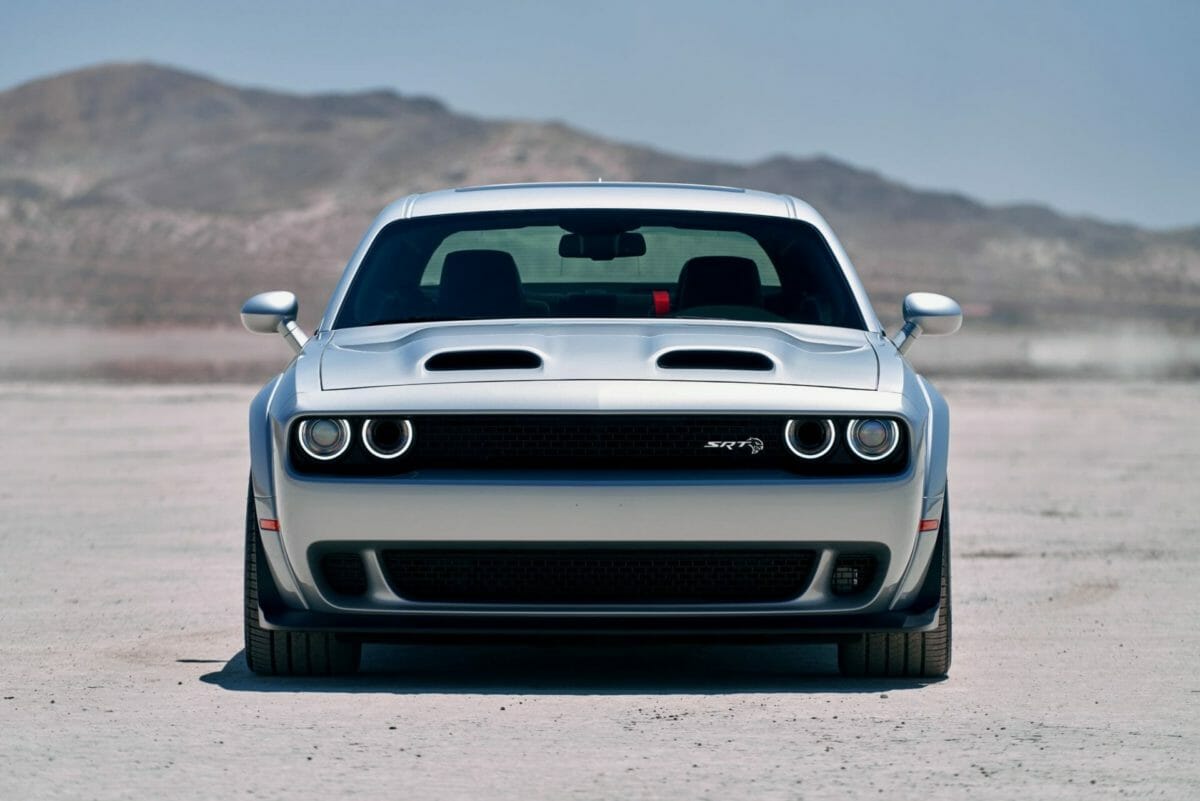
Which Vehicles Have the Dodge Hellcat Engine?
Initially, the only vehicles offered with the Hellcat engine were the Dodge Charger and Dodge Challenger. However, in recent years the engine has made its way into several different vehicles. Let’s take a look at the different variants and horsepower ratings of each.
The original Dodge Challenger Hellcat came with the basic 707 horsepower and 650 lb.-ft. of torque engine. However, in 2018 Dodge released the Dodge Challenger Demon, featuring the same engine as the Hellcat with an upgraded supercharger, making 808 horsepower on pump gas and 840 horsepower on racing fuel.
Following suit, the Dodge Challenger Hellcat Redeye made its debut in 2018 with 797 horsepower and 707 lb.-ft. of torque. Finally, the 2021 Dodge Challenger Hellcat Super Stock makes 807 horsepower on pump gas.
Like the Challenger, the first edition Dodge Charger Hellcat uses the basic 707 horsepower engine.
However, Newer versions of the Dodge Charger SRT Hellcat now come with 717 horsepower.
Also, like the Challenger, the Charger eventually got a Redeye variant that makes the same remarkable 797 horsepower. However, this is the most powerful variant of the Charger Hellcat available.
The 2018 Jeep Grand Cherokee Trackhawk is the first outlier in the lineup of Hellcat-equipped vehicles. The Charger and Challenger debuted with 707 horsepower and remains the same through the 2021 model year.
The Grand Cherokee Trackhawk has a frighteningly quick 3.4-second zero to 60 sprint, making it one of the quickest SUVs in the world.
The two newest editions to the Hellcat powerplant fleet come in the 2021 Ram 1500 TRX and the 2021 Dodge Durango SRT Hellcat. The Ram has 702 horsepower, and the Durango has 710 horsepower.
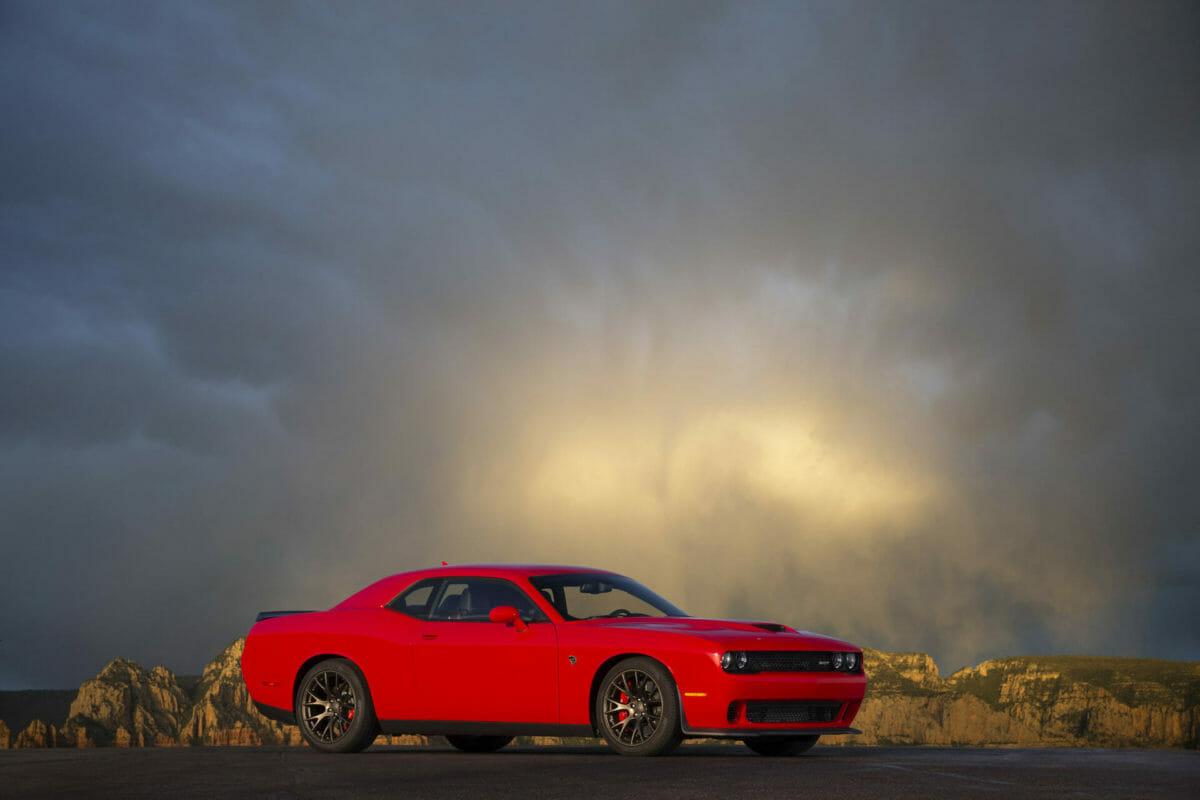
Is the Hellcat Engine Reliable?
As we previously discussed, engineers built the Hellcat engine specifically with monumental power in mind. So, it is safe to assume that even with some spirited driving, the engine will continue to tick along without issue. Though nothing is without its issues, and Hellcats are not exempt.
There’s only one active recall at the moment regarding Hellcat engines. It is specific to a minimal number of 2017 Dodge Charger Hellcats and 2017 Dodge Challenger Hellcats. It states that a hose to the engine oil cooler may come loose, causing rapid loss of oil.
Ultimately, this could end in the destruction of the engine. When buying a 2017 Hellcat or any used vehicle for that matter, be sure to research the VIN history. You can do so with our free VIN research tool to get a detailed history of the car you are looking at. If it is an affected Hellcat, be sure that the recall repair work has been performed.
A past recall specific to 2015 model year Hellcats regarding a faulty fuel like O-ring has been resolved as it only affected about 100 cars. As usual, though, if you’re shopping for a 2015 Hellcat, it doesn’t hurt to ensure it has no recalls active.
There are numerous cases of Hellcats with exceptionally high mileage that have yet to have any major mechanical failures. There’s even one case of a 2015 Hellcat with over 160,000 miles on it that the owner reported way back in May 2019.
Furthermore, many owners report having upwards of 30,000 to 50,000 miles without issue. That being said, owners have also taken the time to track frequent issues with their Hellcats and made them public for record-keeping purposes.
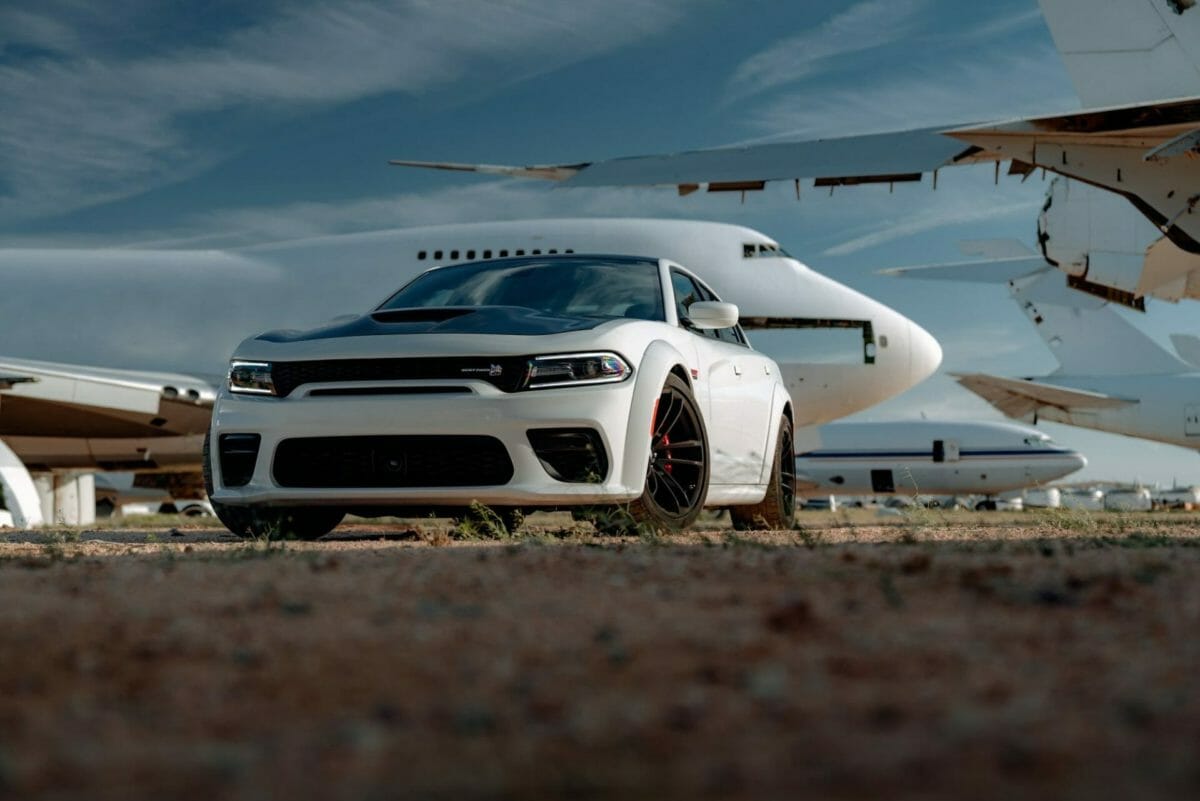
Known Issues with the Hellcat Engine
Hellcat owners have reported an unusual noise coming from their superchargers at idle resembling that of a bad bearing. However, owners report that the whining sound is alleviated by dealers replacing the supercharger. If a Hellcat out of warranty has this issue, it can cost upwards of $10,000 for a dealer-installed supercharger replacement.
Multiple reports of Hellcats with broken rocker arms causing cylinder misfires have been confirmed. However, the issue is very few and far between, so there is no recall for the problem. The chances of it being a problem are very slim but worth looking for.
If looking for a used Hellcat and finding one with a misfire or flashing check engine light, it’s best to move on or have an experienced mechanic look at it and give a repair estimate.
Another rare issue with the Hellcat engine is a failing supercharger pressure relief valve. This causes the loss of power and a check engine light. Again, this issue would be immediately noticeable when test driving.
Finally, a somewhat prominent issue specific for Challenger Hellcat models is a failing radiator hose. While this issue can be minor and easy to repair, an unnoticed coolant leak could cause destructive engine overheating. As with any used car, inspect thoroughly for any coolant or oil leaks before purchasing.
Is a Hellcat a Good Buy?
Overall, if you are looking for a performance V8 vehicle and the Hellcat tickles your fancy, you should feel confident buying one new or used. Though there are known issues, they are not explicitly common. Proper research of a vehicle before purchasing one is likely to land you in a reliable example, even if it is a high horsepower muscle car.
In many cases, Hellcats do not get driven extensively. Therefore, even slightly older models may still qualify for Dodge’s factory warranty.
Additionally, purchasing a certified pre-owned model may give the option of an extended warranty for additional peace of mind. All we ask is that you drive safely with all that power!
Photos: Dodge
